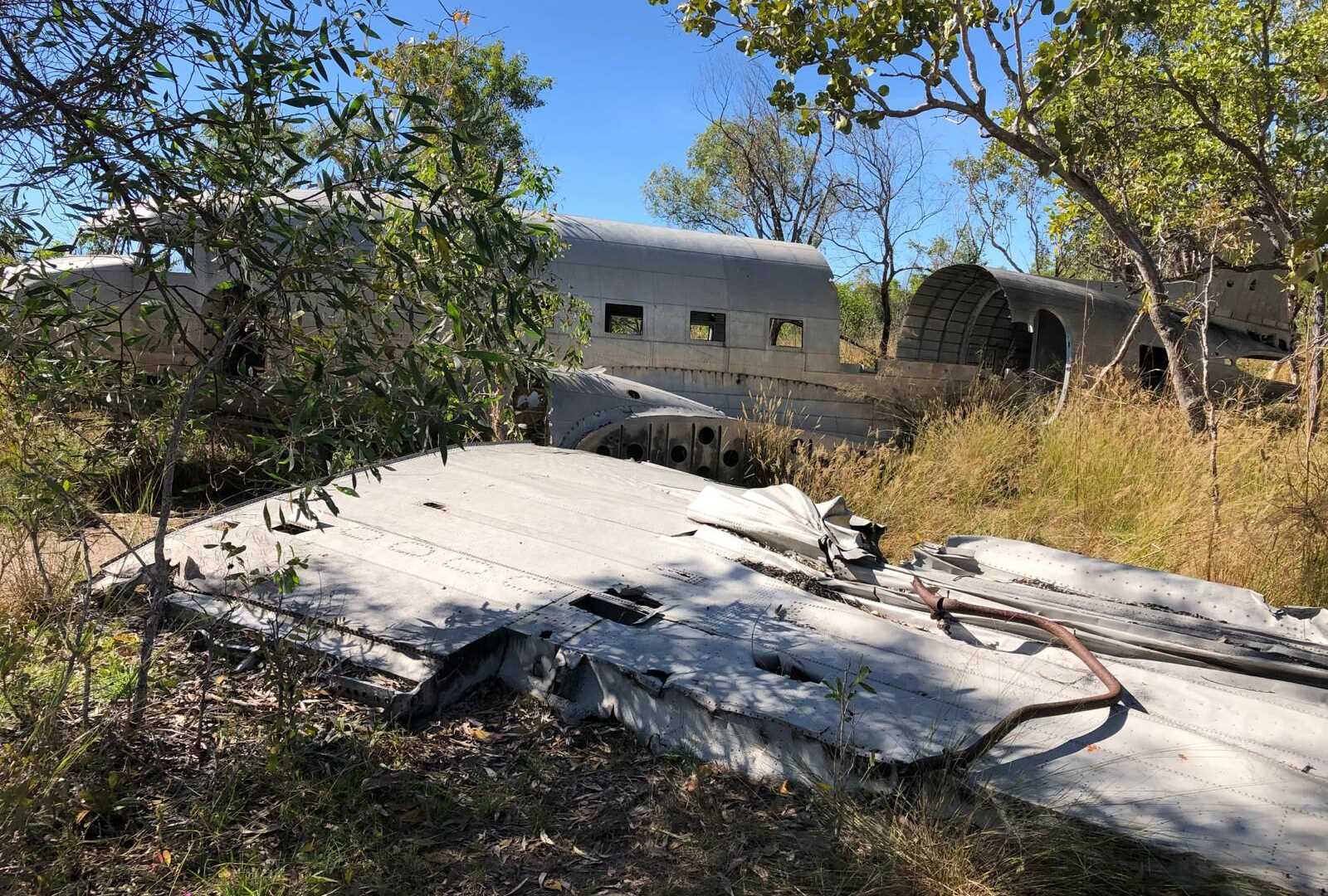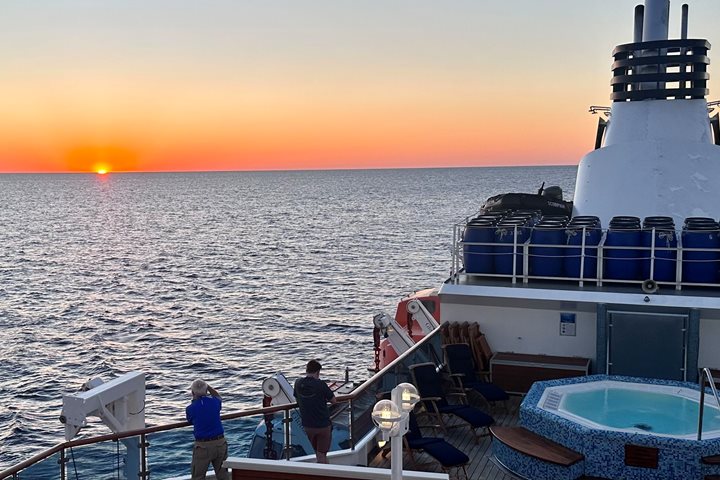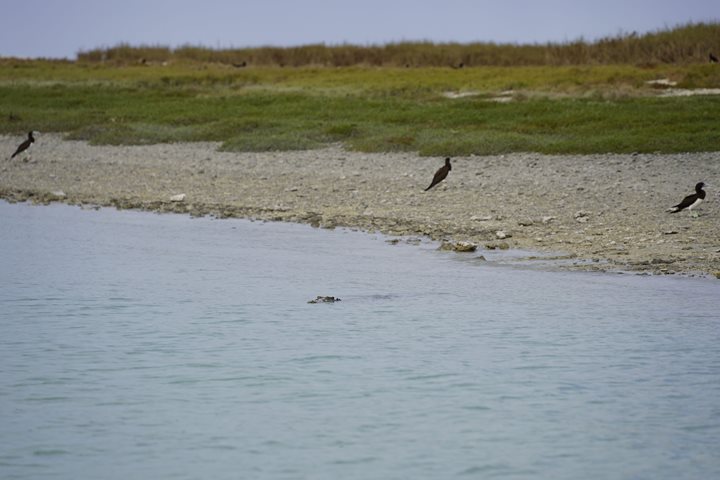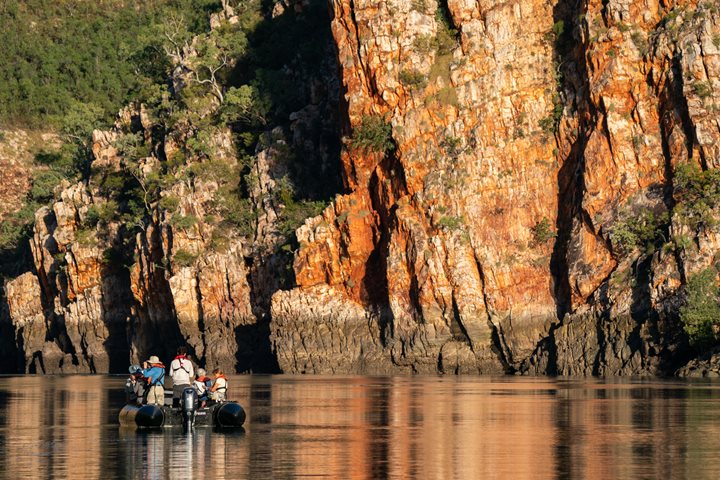On this delightful, dry season morning, we landed on the beach at Vansittart Bay on the coast of North Kimberley. With a gentle sea breeze to cool us down, we walked over sand dunes. We discovered the large, inland salt flat that floods during springtide and then comes alive with a dazzle of bright, iridescent fiddler crabs.
This salt flat was also the location of a C-53 US Army plane that made an emergency landing during the build-up of World War II in 1942. The plane’s aluminum fuselage was abandoned in the nearby bushland, and it still shines bright after so many decades.
After lunch, we visited nearby Jar Island. During his 1819 expedition, Phillip Parker King named the island after observing the many pieces of pottery that were discarded by the Macassan seafarers. For hundreds of years, the seafarers visited the coast to harvest and prepare the sea cucumber or trepang for trade with China.
Jar Island is a fantastic location to view the amazing rock art galleries of the Gwion Gwion paintings. These paintings represent a much older period of culture from the Indigenous first Australians. Some of these paintings are over 12,000 years old.








